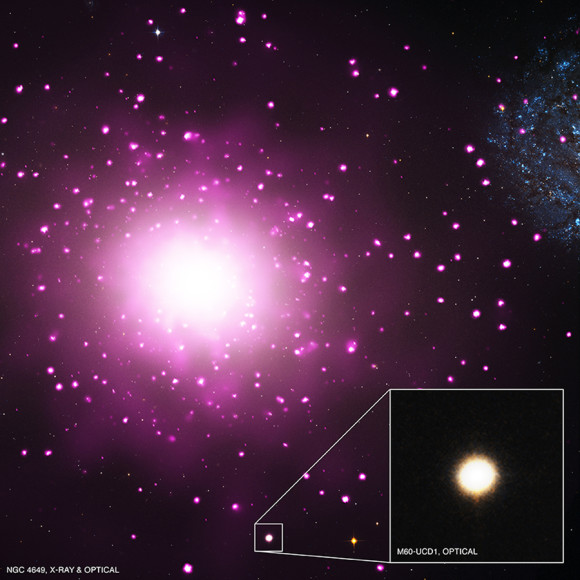That is about the density of a galaxy that was recently discovered by an international team of astronomers led by a Michigan State University faculty member.

“This galaxy is more massive than any ultra-compact drawfs of comparable size,” said Jay Strader, MSU assistant professor of physics and astronomy, “and is arguably the densest galaxy known in the local universe.”
As detailed in the recent edition of the publication Astrophysical Journal Letters, the ultra-compact dwarf galaxy was found in what’s known as the Virgo cluster of galaxies, a collection of galaxies located about 54 million light years from our own Milky Way.
What makes this galaxy, dubbed M60-UCD1, so remarkable is that about half of its mass is found within a radius of only about 80 light years. This would make the density of stars about 15,000 times greater than found in Earth’s neighborhood in the Milky Way.
“Traveling from one star to another would be a lot easier in M60-UCD1 than it is in our galaxy,” Strader said. “Since the stars are so much closer in this galaxy, it would take just a fraction of the time.”
The discovery of ultra-compact galaxies is relatively new – only within the past 10 years or so. Until then, astronomers could see these “things” way off in the distance but assumed they were either single stars or very-distant galaxies.
Another intriguing aspect of this galaxy is the presence of a bright X-ray source in its center. One explanation for this is a giant black hole weighing in at some 10 million times the mass of our sun.
Astronomers are trying to determine if M60-UCD1 and other ultra-compact dwarf galaxies are either born as really jam-packed star clusters or if they are galaxies that get smaller because they have stars ripped away from them. The possible massive black hole, combined with the high galaxy mass and sun-like levels of elements found in the stars, favor the latter idea.
A giant black hole at the center of M60-UCD1 helps tip the scales against the scenario where this galaxy was once a star cluster, since such large black holes are not found in these types of objects.
The galaxy was discovered using NASA’s Hubble Space Telescope. Follow-up observations were done with NASA’s Chandra X-ray Observatory and ground-based optical telescopes, including the Keck 10-meter telescope in Hawaii.
“Twenty years ago we couldn’t have done this,” Strader said. “We didn’t have Hubble or Chandra. This is one of those projects where you bring together the full force of NASA’s great observatories, plus ground-based resources.”











